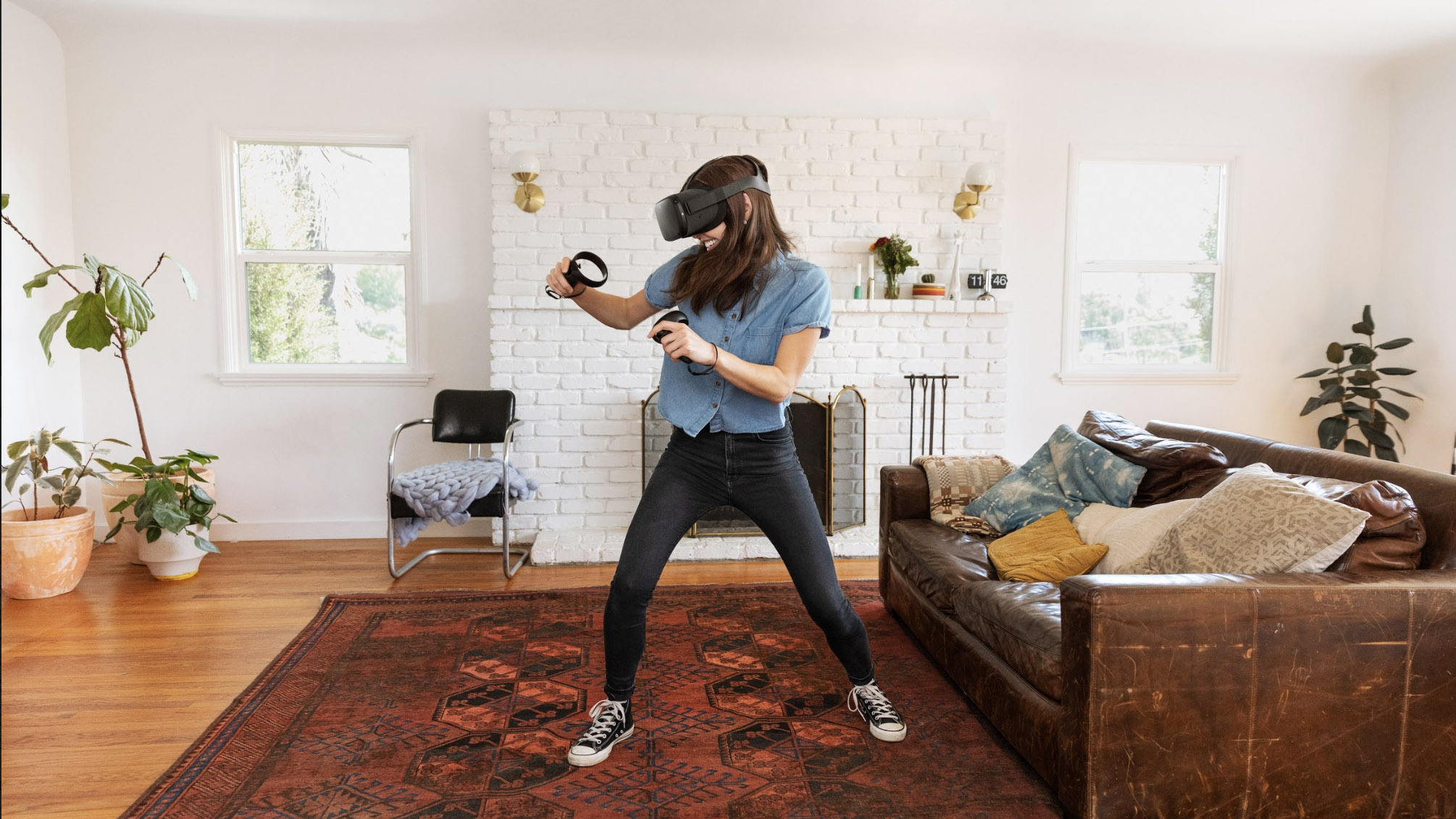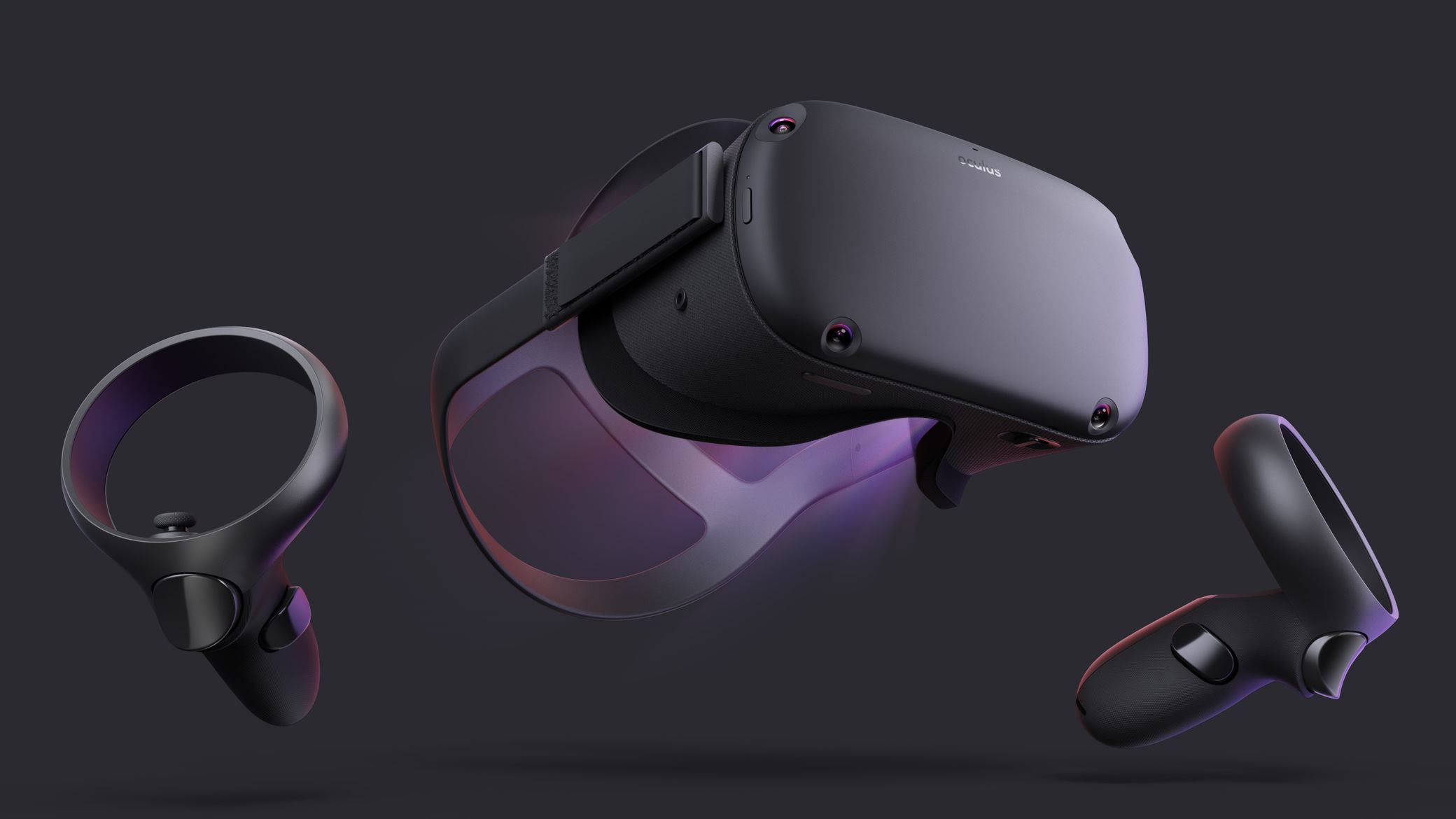Is 5G the key to virtual reality finally going mainstream?
The next-gen of mobile connectivity is the boost VR needs

5G is the next-generation of mobile internet. That means soon, when it rolls out to more than a few locations, it’ll be replacing 4G.
There are lots of advantages to 5G: it promises to be faster than 4G, it’ll cover wider areas, connections will be more stable and latency, which is the response time between your device and the network it’s connected to, will decrease.
This advanced connectivity will have a significant impact on technology and how we use it. From the way we interact with our smartphones and connected home devices through to powering whole industries, such as autonomous vehicles, smart cities and always-on healthcare, just to name a few.
However, if we had to put our money on an industry that could benefit the most from 5G, and may even need it to truly take off, it would be virtual reality (VR).
Although there have been reports over the past few years that VR headset sales aren’t hitting targets, VR is proving to be more and more popular - and this is just the beginning.
According to recent stats, the VR industry as a whole is growing exponentially year upon year. Right now, in 2019, the market size is estimated to be around $6.2 billion, which could rise to a predicted $16.3 billion by 2022 worldwide.
VR is big business and expected to play a major role in a range of industries, from entertainment through to training, education and healthcare. But, although the technology has huge potential, and is already being used in some of these settings, there are still technical issues that hold it back from reaching its full potential.
Sign up for breaking news, reviews, opinion, top tech deals, and more.
The good news is that many believe VR’s biggest obstacles could be overcome by 5G, bringing low latency, super fast speeds and stable connections to headsets that will make VR experiences more accessible, more reliable, and, importantly, more immersive.

The current reality of virtual reality
Virtual reality, often referred to as VR, is a kind of technology that allows you to fully inhabit virtual spaces. But we don’t mean getting lost in a book – the VR we’re talking about here requires you to put on a device, in this case a VR headset, and experience a virtual environment that’s been created by computers.
Most VR headsets are fitted with a display, stereo sound, sensors, and more, to believably place you inside a virtual environment. What that environment is, will depend on what you’re using VR for. VR headsets are typically considered entertainment devices, and you can use them to play all kinds of games, as well as watch TV and movie content. But VR offers more than that.
There are big plans to make social VR as commonplace as social networks, allowing you to connect with friends and family wherever they are. And, increasingly, documentary VR experiences are being made, as well as arts-based content. There are also a range of applications for VR that go well beyond what you’d likely be using a VR headset for at home, including training, education, logistics and healthcare, just to name a few.
Given there are so many uses for VR, analysts have high hopes for the future of the industry. But, although headset sales are now on the rise, VR still hasn’t reached its full potential of being a must-have device in every living room.
There are many reasons why VR hasn’t gone ‘mainstream’ yet. One is that the technology has, historically, been expensive. And, although recent releases are entering the market at significantly cheaper price points, they’re not cheap cheap.
It’s not just the price, either. It’s also a risky purchase for most people. Many need convincing to splash their cash on this kind of tech, as well as to strap a device to their faces to have fun rather than pick up a games controller or switch on their favorite Netflix show.
Another reason, however, is that connectivity has been lacking. The main premise of virtual reality is that you experience a virtual world or space. For that to really work, devices need to be running fast, they need high levels of storage and low latency. That’s why 5G could be just what VR needs for it be for everyone – and enjoyed everywhere.
What 5G can do for VR
“The impact of 5G on the immersive industry may seem small, but in fact, it could be one of the biggest,” Sol Rogers, CEO of REWIND tells TechRadar.
One of the most obvious benefits of 5G to VR, as well as other industries, is that connectivity will be more stable. Right now, VR apps can be interrupted by network performance. 5G, however, will be able to handle many more devices at the same time, meaning your connection doesn’t suffer.

Although this is good news for better gaming and entertainment experiences, it could also be what VR needs to become a more valuable proposition so it can be used across more industries, like healthcare or engineering, which require only the most stable connections to be widely implemented.
5G will also lower latency, which means, essentially, better responsiveness. In this case, it refers to the time taken between a request being made and a response being received.
Low latency is what’s necessary for VR experiences to run smoothly, so there’s no lag - this can lead to motion sickness, as well just unrealistic-looking VR experiences. According to Qualcomm, 5G is expected to provide a 10 times decrease in latency over 4G, which could significantly improve VR experiences.
Existing VR apps would also be able to offload intensive processing to the cloud, which would mean smaller, more energy efficient and even more affordable hardware.
“The core technology (bandwidth and latency) will enable off-device computing,” Rogers tells us. So, your device could be low powered and thus low cost, but still be the front-end to a full size and scalable machine in the cloud or at the edge.”
“This means that the graphical and computational power available to create amazing experiences for all of us will increase exponentially,” he says.

VR is becoming more mobile
The advent of 5G comes at a great time for the VR industry for another reason: it’s already becoming more mobile.
Headsets have, typically, been connected by a wire to a computer, which is how they’re powered. This meant that, for some, they were a confusing proposition, needed extra equipment to work and meant that experiences designed to make you feel free and place you in another environment, were very physically restraining.
However, that’s slowly changing. New headsets like the Oculus Quest, and business-driven HTC Focus, bring high-quality VR to more mobile form factors, which can work well without wires and additional equipment to power them, as well as sense movement without external sensors.

5G’s potential to serve up fast, reliable connectivity wherever you are, appear to be a match made in heaven for this new era of headsets. Imagine VR at the park or just not having to rely on a Wi-Fi connection – that really feels like the future.
The most important thing to remember here is that for VR to do what it says it can do, immersion is important. For a virtual world to feel like the real world, everything needs to match up.
From the way images are presented to the speed of the world moving as your head does to visuals that fool your senses into thinking you’re really there. It has to be fast and it has to be realistic.
The great thing about 5G is it will be able to enhance these experiences and this will, hopefully, allow VR to reach its full potential.
5G Uncovered, in association with Samsung, brings you everything you need to know about the next wave of connectivity - not just how fast it's going to be, but in just how many ways it's going to change your life. Our 5G Uncovered hub is carefully curated to show everything there is to know about the next generation of connection.
- The best VR games this year

Becca is a contributor to TechRadar, a freelance journalist and author. She’s been writing about consumer tech and popular science for more than ten years, covering all kinds of topics, including why robots have eyes and whether we’ll experience the overview effect one day. She’s particularly interested in VR/AR, wearables, digital health, space tech and chatting to experts and academics about the future. She’s contributed to TechRadar, T3, Wired, New Scientist, The Guardian, Inverse and many more. Her first book, Screen Time, came out in January 2021 with Bonnier Books. She loves science-fiction, brutalist architecture, and spending too much time floating through space in virtual reality.